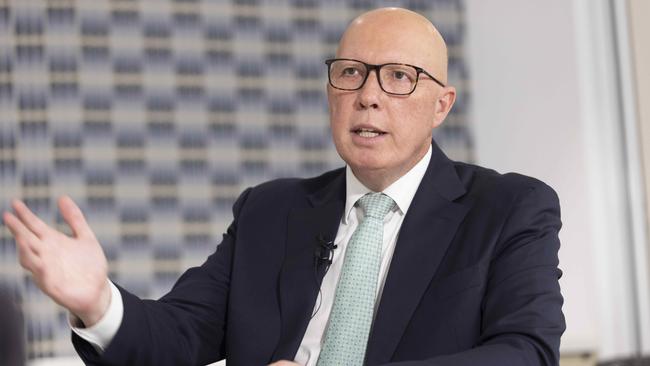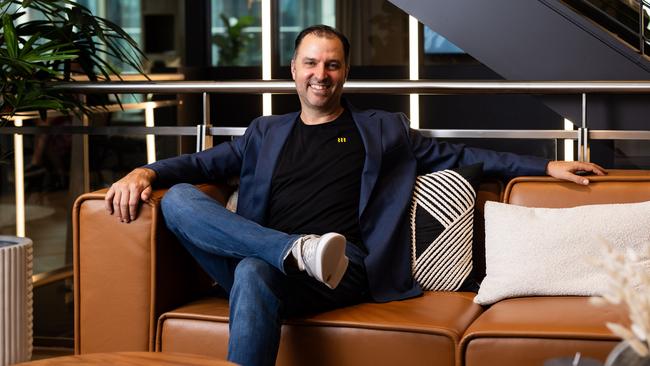Australia in the middle of a ‘great workplace realignment’
The “great workplace realignment” is upon us and businesses across the country have been warned to expect a major “wake-up call”.
Business
Don't miss out on the headlines from Business. Followed categories will be added to My News.
Australia is now in the midst of what is being dubbed the “great workplace realignment”, meaning companies across the country are on the brink of massive change.
For many Aussie workers, 2025 has been marked by a frustrating power struggle between employers and employees centred around the growing push to get more people back into the office.
We are seeing an increasing number of companies walking back hybrid and remote working policies, with many calling for a return to the office full time.
This has been met with backlash from workers, with many unwilling to lose the flexible working arrangements they have become accustomed to for, in some cases, seemingly no other reason than “this is the way it used to be”.
We have even seen this defiance from the Australian workforce play out in real time during the election campaign, with Opposition Leader Peter Dutton recently backflipping on his strong anti-WFH stance.

In March, the Coalition announced its plan to force a return to the office five days a week for all public servants, a move that would impact more than 365,000 workers.
The announcement was met with widespread backlash, particularly from women and working families who would be disproportionably impacted by such a directive.
Mr Dutton later softened the threat, saying a Coalition government would not mandate a minimum number of office days for the public service workforce but instead wanted remote working to go back to “pre-Covid levels”.
This is just one example of the types of conflicts that are playing out in workplaces across the country.
A new report from HR platform, Rippling, has found this conflict has put Australian workplaces right in the middle of this “great workplace realignment”.
The Workforce Dynamics report, which is based on a survey of 1000 Australian employees, has revealed just how far workers are willing to go to hold onto their flexible working arrangements.
A whopping 42 per cent of respondents said they would reconsider joining a company if full-time office attendance is expected and a further 53 per cent ranked family-oriented benefits, such as flexible hours and parental leave, above all else.
Speaking to news.com.au, Matt Loop, VP and Head of Asia at Rippling, said the great workplace realignment describes the “fundamental shift” we are now seeing in what Australians want from work, along with the growing gap between those expectations and what employers are willing to offer.
“It’s clear that people want more from a job than one that just pays the bills,” he said.
The research also showed that a significant amount of the workforce, 34 per cent, would walk away from a role that didn’t offer hybrid options.

However, Mr Loop pointed out previous research from Rippling shows employers still favour candidates that are willing to be in the office full time.
“That mismatch is driving disengagement, higher turnover, and the erosion of trust,” he said.
“This realignment isn’t a temporary trend – it’s a wake-up call for businesses to rethink how they attract, retain, and respect their people.”
There are different reasons that companies may want staff back in the office full time.
For some businesses, it could be linked to a belief that being in the office drives collaboration, productivity and culture.
In other cases, Mr Loop said it could be about “control or legacy thinking”, or even a top-down pressure, particularly in multinational companies, where global mandates often influence decisions.
“But the risk is applying a one-size-fits-all approach to a workforce that’s clearly saying it wants more flexibility. Ignoring that could be costly on talent retention,” he said.
So, when will this power struggle over working from home finally end?
Well, according to Mr Loop, it’s not quite as simple as one side winning over the other.
“I’m not sure there will be a clean end to the flexibility debate. What we’re seeing is less of a struggle and more of a reset. Flexibility is here to stay, but how it’s implemented will continue to evolve,” he said.
“Some companies will push harder on in-office time, especially if they feel collaboration is suffering.
“Others will double down on hybrid or remote-first models because it helps them access talent and boost retention.”
Mr Loop said the key is not about choosing sides, but instead businesses finding a model that “balances employee autonomy with business outcomes”.
Originally published as Australia in the middle of a ‘great workplace realignment’





